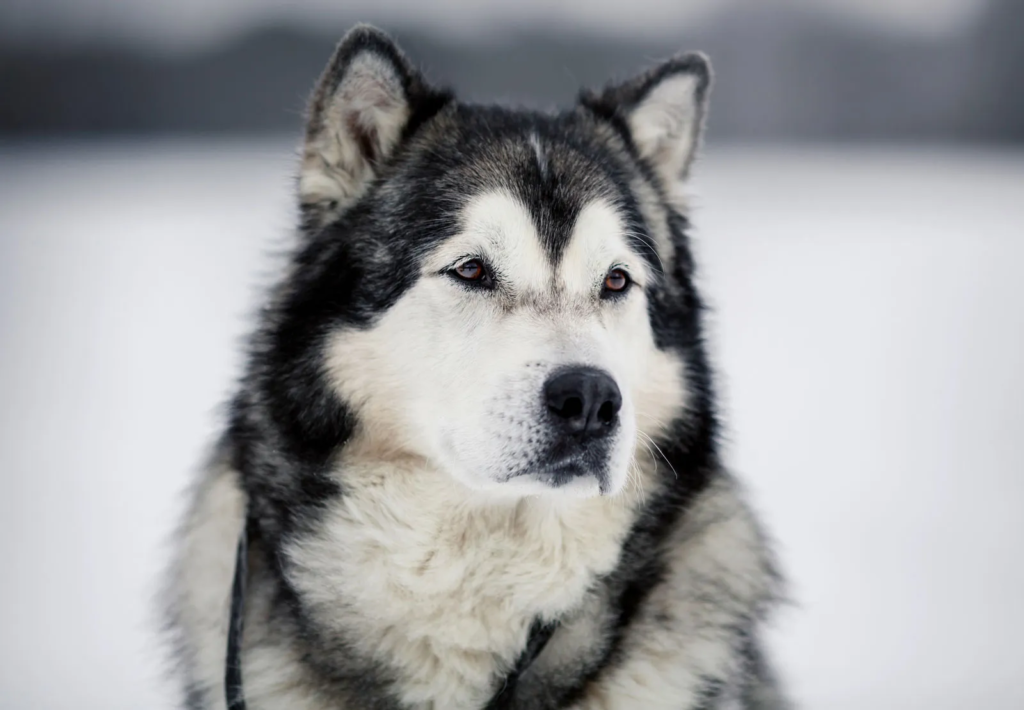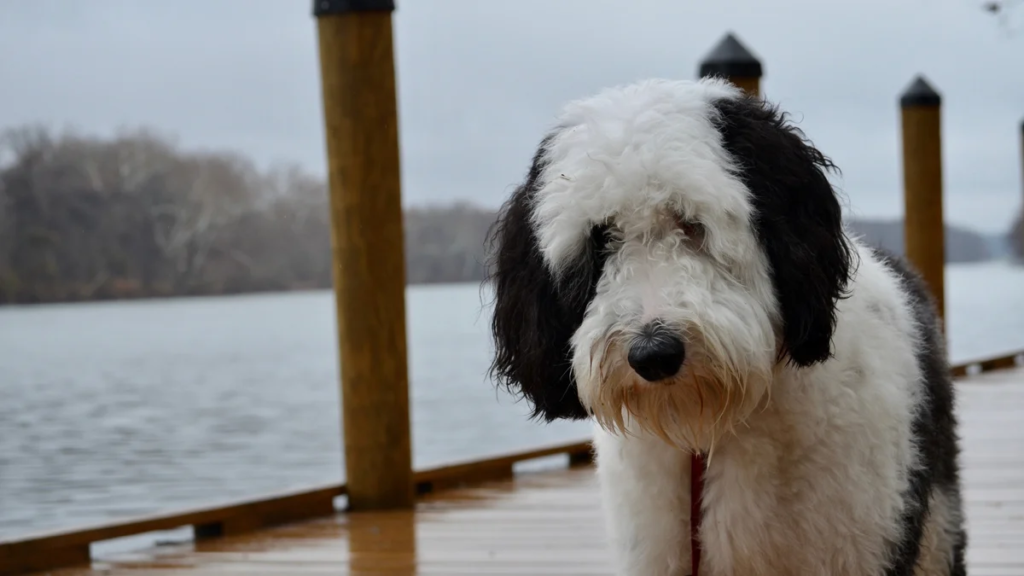Last Updated on September 1, 2023 by Fumipets
Cold Weather Dog Breeds: Adapted for Frosty Environments
Cold-weather dog breeds possess unique characteristics that make them well-suited to thrive in chilly climates. These breeds have evolved over time to withstand frigid temperatures and snowy landscapes, and their distinctive traits make them excellent companions for those living in cold regions.
In this exploration, we’ll delve into the characteristics, care, and considerations for these remarkable canine companions.
Dog Breeds
The finest canines for frigid climates flourish when it gets cool. Breeds with heavier fur are frequently descended from regions with harsher climates and will be more tolerant of low temps.
These cold weather canine types make wonderful partners, whether you want to run through the snow or simply reside in an area where your daily outings could get fairly dang chilly.
Alaskan Malamute

The Mahlemiut Inuit community initially raised Alaskan Malamutes to assist in pulling hefty cargo through icy terrain. Due to their double coats of hair, these active canines have a ton of internal protection for frolicking in winter wonderlands. As big dogs capable of hauling sleds, Alaskan malamutes weigh 75 to 85 pounds, making them the ideal addition to a family that enjoys winter activities.
Great Pyrenees
Great Pyrenees are snow-white canines renowned for their size and power, and they got their name from the Pyrenees Mountains where they were first raised. Great Pyrenees canines can measure up to 100 pounds when fully mature. Although it can also discharge around your house, their double covering insulates them from the weather. (Frequent brushing helps minimize this). They are peaceful and composed due to their background in sheep-herding, but they also need a lot of room to wander, which makes them perfect for outdoor activities in frigid climes.
Saint Bernard
The St. Bernard Pass, a perilous section of the Alps that connects Italy and Switzerland, is where Saint Bernards acquired their reputation as saints by saving travelers en route to Rome. They make great cold weather canine breeds for outdoor activities thanks to their thick fur. With weights ranging from 120 to 180 pounds, they are the biggest canines on our list, but only their devotion to their fortunate owners rivals their girth.
Borzoi
The Russian nobility raised borzois, also known as Russian wolfhounds, for their quickness when chasing wolves in subzero temps. These exquisite cold weather canines love to run and play in the snow, which makes them the ideal hiking and running partners because of their long, smooth hair and even longer legs.
Scottish Terrier
Scotties, also known as Scottish Terriers, are native to the Scottish Highlands. These low-allergen canines are protected from the weather by a dense covering and a soft fleece. Scotties are extremely flexible and autonomous dogs who are equally content living in a condominium as they are running through the snow.
Sheepadoodle

Want a non-shedding indoor canine for chilly weather? Discover the sheepadoodle, a hybrid of a poodle and an ancient English sheepdog. Sheepadoodles enjoy physical activity, and because of their thick fur, they can keep up with you even when the weather gets chilly. They’ll keep you toasty all winter long thanks to their soft nature and teddy bear-like look.
Shiba Inu
Shiba Inus adapt well to cooler climes thanks to their dense double layer. This makes logic given that they have a history dating back to 300 B.C., when they were developed to pursue animals in the Japanese highlands. Due to their freedom, these small dogs—which measure between 17 and 23 pounds—are referred to as the mice of the canine world.
Border Terrier
Concerned about hair but want a canine for all seasons? Short-haired canines can also be developed for frigid climates. Short-haired border terriers make excellent cold-weather pets. They are equally at home snuggled up on your sofa on chilly winter evenings as they are running through a mound of new snow thanks to their tiny size (they weigh just 15 pounds!) and their double layer of dense hair, which requires little upkeep.
Beagle
Another great breed for chilly conditions is the beagle. No matter the season, these adored dogs are anxious walking partners in the winter because they have keen senses of scent. They consistently rank among the most well-liked varieties in America, and it is simple to understand why given their amiable nature.
Irish Setter
Irish setters are wonderful family companions and cold-weather dog types because of their distinctive red fur. They are more suitable to the vast outdoors than dwellings, standing 2 feet tall. Once they’re in their environment, these perceptive, active canines will play in any conditions by your side.
Caucasian Shepherd

Massive canines known as Caucasian shepherds or Caucasian Ovcharkas are devoted to and protective of their masters. These big, water-resistant canines of this old breed have their roots in the Caucasus highlands, where they were bred to manage livestock, assist in bear hunting (yes, really!) and guard the houses of their owners.
Pomsky
A Pomsky is a mixed breed made up of a Pomeranian and a Siberian dog. Pomskies are energetic dogs with striking, bright eyes that are renowned for their cute features and strong connection to their masters. A Pomsky might be the ideal cold weather house canine for you if you adore huskies but reside in a tiny house or condominium.
Newfoundland
The docile creatures known as Newfoundlands were originally discovered in Canada’s Newfoundland. They are used in England and Wales as safety partners and to recover fishermen’s nets because of their extraordinary swimming skills. They can even do the breaststroke! Even if you’re not fishing or diving in chilly waterways, Newfies are loving cold-weather canines who typically get along well with families and kids.
Chow Chow
Because of their royal appearance and demeanor, chow chows are frequently likened to lions. They are another excellent option for a chilly weather house canine because they don’t require much activity and don’t scent like other dogs do, though they can be distant like cats do. Because of their dense hair, chow chows can become overheated in hotter climes, so it’s important to keep them calm.
Frequently Asked Questions
What are cold-weather dog breeds, and what sets them apart from other breeds?
Cold-weather dog breeds are those specifically adapted to thrive in colder climates. They often have features like dense fur, insulating undercoats, and body structures that help them conserve heat and withstand low temperatures.
Which dog breeds are known for their cold weather tolerance and what are their key characteristics?
Breeds like the Siberian Husky, Alaskan Malamute, Bernese Mountain Dog, and Newfoundland are renowned for their cold weather tolerance. They typically have thick double coats, strong bodies, and a history of working in snow and cold environments.
What special care considerations are needed for cold-weather dog breeds?
Proper care for these breeds in cold climates includes providing shelter from harsh weather, regular grooming to manage their thick coats, and ensuring they have enough exercise and mental stimulation to stay active during the winter months.
Can cold-weather dog breeds adapt to warmer climates, or should they only be kept in cold regions?
While these breeds are best suited to cold environments, many can adapt to warmer climates with some precautions. Owners in warmer regions should be mindful of heat-related risks and provide ample shade, hydration, and cooling measures during hot weather.
Are there any health concerns specific to cold-weather dog breeds, and how can they be addressed?
Some cold-weather breeds are prone to hip and joint issues. Regular veterinary check-ups, a balanced diet, and maintaining a healthy weight can help mitigate these concerns. Additionally, protecting their paws from ice and salt on winter walks is essential to prevent injury.


















